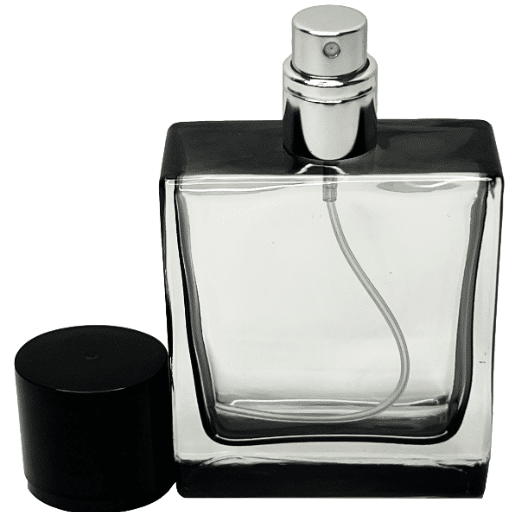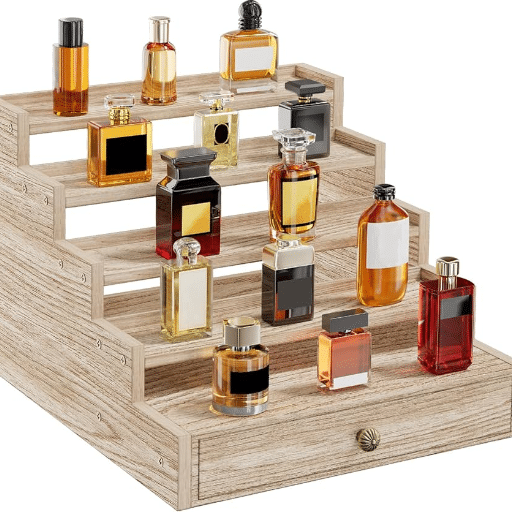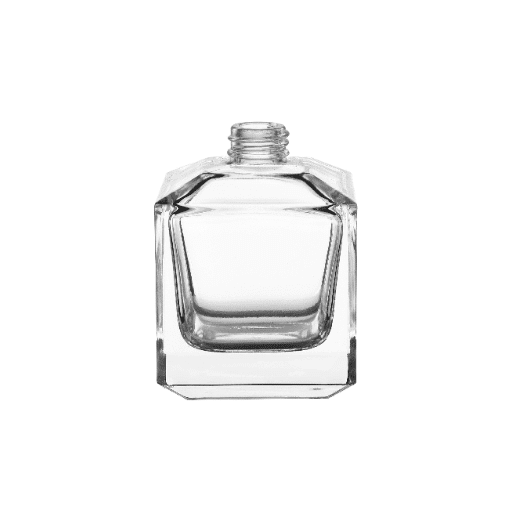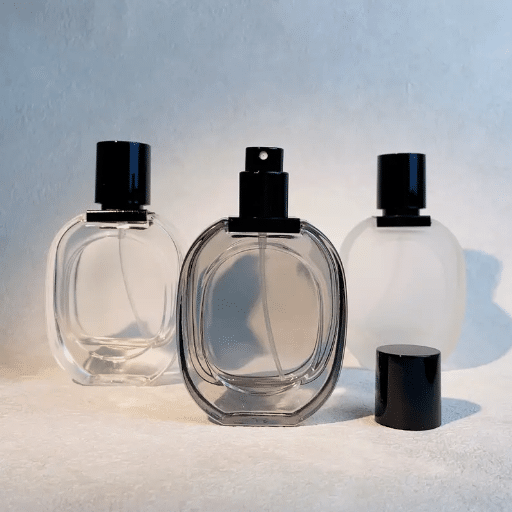The design of a perfume bottle is far from the vessel for fragrance, but it is considered an art, a symbol of luxury, and a powerful means of storytelling. From the ornate glasswork typical of the early days of perfume-making to the sleek, modern lines of today, the evolution of perfume bottle shapes reflects cultural shifts, technological advancements, and changing consumer tastes. Here is a study of how designs create emotional engagement, enhance product appeal, and build brand identity. By merging beauty, functionality, and marketing, we aim to explore several interesting aspects of how bottle shapes influence customer perception and buying behavior. Get ready to enter an intriguing world of creativity and modernity, where every curve, angle, and nuance is a narrative unto itself.
Historical Overview of Perfume Bottle Shapes
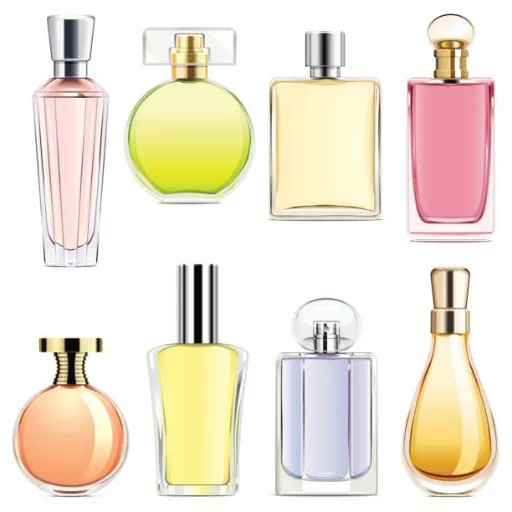
The contours of perfume bottle shapes have evolved over the years, even centuries, influenced by contemporary, artistic, or technological trends. In the ancient times of Egyptians, Greeks or even Romans, the containers consisted mainly of simple alabaster clay or glass hand made vessels, which were primarily concerned with the concept of storing oils or other essences. With the advent of the Renaissance, the development of glassblowing in Europe enabled the production of intricate and beautiful bottles for the wealthy. By the nineteenth century, the Industrial Revolution allows perfumes to be produced more cheaply and made available in standardized, designed bottles. In the twentieth century, promoting brand image became a significant concern, and consumer characteristics came into play, with certain influential types emerging, especially Decoart and Postmodernism. Even today’s perfume bottles, a blend of new design and greener practices, still cannot negate the linkage between design and the changing times of society.
Ancient Origins and Early Designs
An insight into the skills required for designing perfume bottles dates back to the history of ancient cultures. Here are the major civilizations in which people not only made plain containers for aromatic substances but also exceptional structures that were both useful and aesthetically pleasing. Earlier traces from Mesopotamia and Egypt indicate that they used organic materials, such as alabaster, clay, and glass, to make these vessels for more than just serving a practical purpose. Take, for instance, Egyptian perfume bottles. They take on a graceful and usually long cylindrical shape, which has a religious and social cultural impact. Women of ancient Greece and the Roman Empire, while elaborate perfume bottle shapes and designs in the form of amphorae reflected women’s aesthetics and geometric proportions, had been achieved, which represented a distinct art form and a concentration on beauty.
These early containers have always been deliberate and strategic, as they have helped to project the wealth and status of the people, or even their religious practices. For instance, particular shapes and materials were used exclusively by the noble and most distinguished members of society, which revealed the importance assigned to fragrances and the tendency to view them as luxury items. Such primary thinking―to functional meaning, symbolism―provided the basis for spectacular even ridiculous perfume bottle shapes throughout the ages.
Evolution of Perfume Bottle Styles through the Ages
When analyzing the history of perfume bottle shapes, it is possible to identify certain transformations in their appearance in response to technological, artistic, and social changes that have occurred. In the distant past, particularly in the Lustrous vessels made of clay or alabaster, which were predominantly decorative and often connoted wealth, were expressions of other people’s cultures. In other words, such objects were in existence approximately a hundred years ago. In the sixteenth and seventeenth centuries, as technology advanced, designs began to incorporate glass more heavily. In particular, the area around Venice, renowned for its Murano glass and the Murano glass-making technique, was utilized to create highly decorative and ornamental bottles with practical functionality.
Mass manufacturing of goods during the 19th century led to the Industrial Revolution, during which perfume bottles became widely available to the masses. Many designers, for example, Philippe-Auguste Guérin, have made great use of new developments in glass and the sprays traditionally used for massage. Sharp bends and angles characterize the geometry of early 20th-century art, often realized in collaborations between fashion designers and glass artists, such as René Lalique. In these cases, the perfume bottle shapes became more than just a functional product; they were works of art in themselves.
Presently, avant-garde packaging designs and innovativeness have indeed improved the appearance of bottles. Utilizing clever materials and employing cutting-edge manufacturing and decoration methodologies, brands can create products that would otherwise appear imaginative for human capabilities. And although environmental and minimal decoration styles are on high demand, some companies are more inclined towards coming up with refills and/or packaging products, hence avoiding much harm to the environment. As more people are drawn to what is trendy yet of supreme quality, the luxury goods industry is tapping into this market and offering a descriptive structure to avoid exclusion. Such developments have taken place, including the concept of custom-made bottles produced using 3D printers and packages with codes that enable customers to experience augmented reality. Such a track record illustrates the persistent and unchanging correlation between societal trends and artistic vision in the evolution of perfume bottle shapes.
Cultural Significance of Different Bottle Shapes
The cultural significance of perfume bottle shapes is primarily influenced by the epichemical and historical milieu in which they were manufactured. Particularly regarding shape, it derives from a place and time where particular values, traditions, and a sense of beauty were apparent. An example is the Egyptian flacons, which had exquisite moulded glass or alabaster; it is a luxury, a practice, and a belief that perfume is used as incense during holy processes. Similarly, the elaborate and luxurious decorations of the European Rococo period exemplified the opulence of the noble class. On the other hand, plain and geometric forms that became popular during the modernist movement of the 20th century emphasized utility and the avoidance of excessive decoration, indicating a shift towards an industrial and everyday aesthetic. Across the continents, the cohesiveness of the types of designs, materials, and personal symbolics is not only communicative but serves to socialize and is as artful as the functional use of the perfume bottle; however, as always, shapes are one of those media that both oscillate between traditions and are best suited to current use.
Types of Perfume Bottles
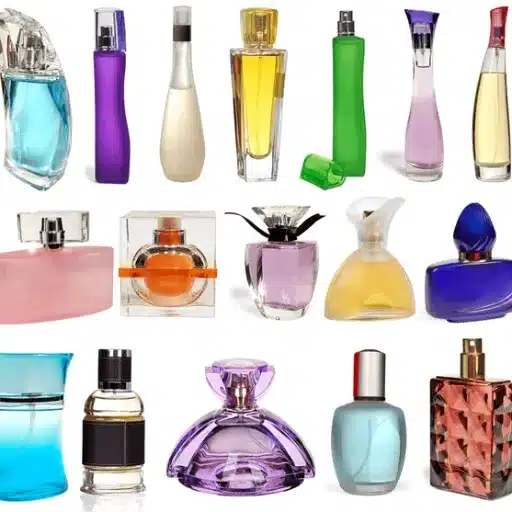
Perfume bottles can be broadly categorized into classic, decorative, vintage, refillable, travel-size, minimalist, rollerball, and atomizer types.
| Type | Material | Size | Key Feature | Use Case |
|---|---|---|---|---|
| Classic | Glass | Varied | Timeless design | Everyday use |
| Decorative | Crystal | Varied | Ornate design | Display pieces |
| Vintage | Porcelain | Varied | Antique appeal | Collection |
| Refillable | Plastic | Compact | Sustainable | Eco-friendly |
| Travel-size | Glass/Metal | Small | Portable | On-the-go use |
| Minimalist | Glass | Varied | Simple design | Modern tastes |
| Rollerball | Glass | Small | Precision | Personal use |
| Atomizer | Metal/Glass | Medium | Fine mist spray | Versatile use |
Classic Glass Bottles
The classic perfume containers are mainly associated with the use of glass for perfume bottle shapes as they are simple and most accepted in every industry. They are generally made of clear or colored glass to enhance the fragrance’s color. Some of them have elaborate designs, with raised patterns, fancy stoppers, and other interesting forms, primarily for luxury and such vintage types of perfumes. The stronger and potentially heavier nature of these materials allows the perfumes to be stored securely and impresses any client or collector with its style. As more and more elegant products are designed, classics such as glass bottles continue to exist and find application due to their utilitarian properties in the aesthetic marketing of fragrances.
Modern Plastic Variants
Advanced plastic forms of perfume bottle shapes have been developed and marketed as a diversified and cost-effective alternative to traditional glass bottling systems. These containers are usually manufactured from advanced-grade materials, in particular, polymers like Polyethylene Terephthalate (PET) and High-density Polyethylene (HDPE) – all of which have great sturdiness, break resistance and a reduction of weight. Molding techniques, including Injection and Blow Molding, provide the skills to mold challenging products that address the requirements of different brands.
Furthermore, modern plastic perfume bottles, for instance, have incorporated sustainable mechanisms, such as recycling and biodegradable polymers, to address the heightened level of environmental awareness currently present within the industry. Although some people may not find plastic bottles as appealing as glass, they are mostly preferred due to their utility, ease of transportation, and low likelihood of breakage. All these features make them ideal for mass perfumes, traveling collections, and also high output volumes. Incorporating stylish elements and cutting-edge designs into the production of plastic bottles is essential for maintaining the competitiveness of this product.
Unique and Artistic Designs
These fragile vessels, designed to contain perfumes, are now far removed from mundane containers or mere vessels, and from the way they carry brands and meet customer expectations. In most cases, the shapes are distinctive, and different materials and finishes are used to achieve a particular look that complements the fragrance itself. For example, almost every shape of a flower or seashell created from chiseled glass, along with sharp geometric shapes inspired by architecture, now has its place among the famous perfume bottle shapes. Engraved finishing, use of metallic tones and classy glass are some of these enhancements. These complex designs have the intention not only to delight the viewer with their beauty but also to evoke and develop feelings of embarrassment in the receptor’s mind, making the atopic scent relate to exclusiveness. Steel and glass are the materials most recently used in environmentally friendly and beautiful feminine performances that simply meet this.
Impact of Bottle Design on Consumer Perception
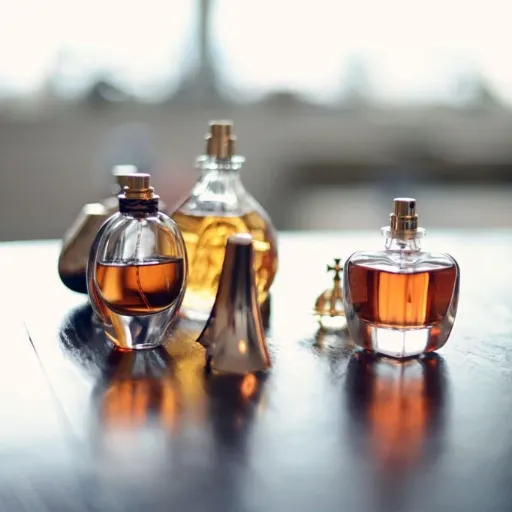
The shape of a perfume bottle influences a customer’s perception of that product, as one of quality or aesthetic remains one of the most salient strategies that affect consumer buying habits. The design effectively conveys the message regarding the mood, quality, and demographic of the perfume to such an extent that it forms positive perceptions, which are likely to occur. Attributes, including shape, material, color, and even detailing, contribute to the creation of an image that consumers aspire to, as using the product aligns with what the brand stands for. Additionally, modern designs appeal to contemporary consumers, especially when they are sustainable, which combines luxury with accountability. Thus, the It bottle serves as an advertising tool that influences customers’ choices and enhances brand assurance.
The Psychological Influence of Bottle Shapes
The shapes of perfume bottles significantly influence consumer perception and behavior. This is evident in the fact that a bottle can elicit specific psychological associations, such as aesthetics, power, or fun, depending on its shape and design. Examples include that softer contours usually evoke round designs, which convey comfort and femininity. In contrast, sharp or geometric shapes communicate more cutting-edge designs, appealing to strength and luxury. These perceptions influence the way the perfume is perceived by consumers and, to some extent, shape expectations even before the scent is experienced. The creative design of bottle shapes leaves a lasting impression, making the product more attractive and increasing the desire to purchase it.
Aesthetics and Emotional Connection in Perfume Purchasing
The overall look of a cologne, including the shape of the bottle, the written label, and marketing, is critical in influencing the buying behavior of individuals. It has been noted that the beauty of shapes has a way of creating a strong attachment, as customers tend to associate specific shapes or colors with the character of a given scent. An example can be mentioned of how rounded bottles are perceived as soft and soothing, and can therefore be easily paired with floral or romantic scents. In contrast, angular, structured bottles reflect a modern aesthetic with clean lines, presenting the idea of luxury and pairing well with woody or musky scents. Furthermore, colors have a significant influence on emotional processing. Colors such as reds and golds are often associated with love and wealth, while pastel colors convey femininity and gentleness.
On an emotional level, a person’s visual and tactile experience with perfume bottle shapes also comes with a baggage of anticipation about what the fragrance is going to be, even in the absence of the representative scent. Evidence suggests that perfumes with more creative designs are perceived as more sophisticated and inaccessible, and therefore more coveted. Hence, brands utilize visual storytelling through packaging to ensure results are memorable and customers remain loyal, proving that aesthetics are not overrated in the perfume business.
How Design Reflects Current Fashion Movements
The production of perfume bottle shapes in manufacturing is geared towards the masses and reflects a feminine fashion illustration mood that is well-liked, even if it’s imaginative or abstract. As the number of questions regarding minimalist and eco-friendly designs has grown remarkably, there is a growing realization that people are increasingly drawn to simple and environmentally sensitive packaging. This aligns with the overall fashion trends of minimalism, environmental consciousness, and subtle sophistication. Perfume companies, on the other hand, answered customers’ aspirations by incorporating elements into their designs, such as packaging bottles with recycled content, clean shapes, and neutral shades.
Furthermore, the revival of vintage appeal, as indicated by the trending query for “vintage-inspired perfume bottles”, points to a universal liking for designs that have the look and feel of the years gone by. Such a development bears a striking resemblance to the fashion evolution, where we have witnessed a resounding resurgence in the wearable fashion of centuries gone by. Likewise, the decorative considerations for perfume bottle designs that involve extensive and colorful concepts are often permeated with fashion, especially when the addition of a perfume designer and/or an artist is involved. Therefore, this reasoned information illustrates that the progression in perfume bottle shapes is explained not only by their functionality but also by their capability to capture, succinctly, relevant aspects of culture as well as their integration into current fashion trends.
Modern Trends in Perfume Bottle Design
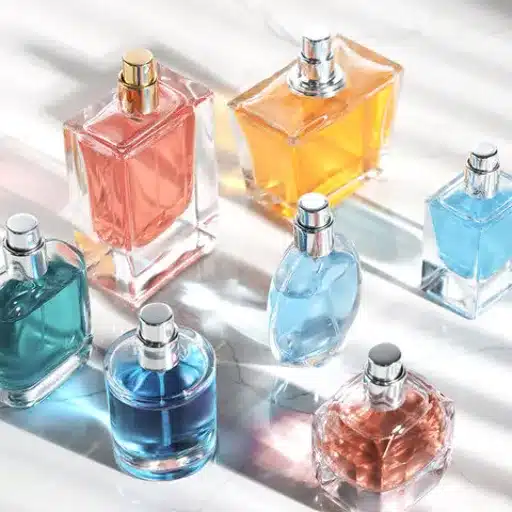
A notable shift in the design of perfume jars in recent times is the increasing emphasis on sustainability. Manufacturers are increasingly choosing environmentally friendly materials, such as glass bottles that are easily recyclable and packaging made from biodegradable plastics, to cater to consumer demands for greener practices. The minimalist and refillable options in particular have become more widely used in such cases due to their ability to be refined without sacrificing functionality. Replication is, however, a new and unique trend that the industry is witnessing, where perfume bottle shapes can be customized by the consumer, allowing for a more personalized relationship with cosmetics.
Eco-Friendly Materials and Practices
Designing new perfume bottle shapes that use eco-friendly materials and practices is one aspect of the fragrance industry that has undergone notable changes in recent years, which is partly comprehensible due to regulation and driven mainly by consumer demand. New kinds of materials, such as PCR glass, which stands for post-consumer recycled glass, are viewed as a suitable alternative to conventional glass because this glass possesses its own strength and beauty, while also helping to reduce the carbon footprint associated with transportation. On the other hand, eco-friendly substances, which are biodegradable, are being tested for effectiveness in caps and labels to close the loop in packaging.
Additionally, manufacturers are working towards energy conservation during production by switching to renewable energy sources and reducing water usage in their operations. Making glass lightweight is another approach aimed at minimizing the materials used in sections, without deforming the bottles. Moreover, refillable systems are becoming a healthier alternative, where the customer retains the perfume bottle and changes only the fragrance, thereby contributing to minimal packaging waste. It should be noted that these disruptive models not only respond to the social dynamics regarding perfume bottle shapes but also redefine the sustainability targets of the perfume industry.
Current Consumer Preferences in Bottle Shapes
Consumers’ modern preferences are inclined towards bottle shapes that strike a balance between beauty and sustainability, as well as the essential aspect of environmental responsibility. Badana and neat outlines are most preferred as they offer a classy look while still allowing for efficient use and storage. Additionally, there is concern about ergonomics, as the bottles consumers use are designed to allow for easy holding and dispensing. Other than that, there is a shift towards the adoption of diverse and captivating designs that can also convey luxury and eccentricity, just as the scent worn. These shapes include those made of recycled or non-biodegradable materials, thereby facilitating the intention of refilling, which is increasingly becoming crucial due to the growing acceptance of a green lifestyle in society.
Future Directions in Perfume Bottle Design
The new trends in perfume development will be associated with both environmental safety and usability. Existing designs will be improved by using, among others, recycled glass, refill, and biodegradable materials. The improved design will also incorporate technology such as social media, smartphones, and augmented reality, coupled with the product. Appealing but straightforward shapes, whose ideology involves pomp and internal luster, are increasingly in demand. Moreover, possibilities for personalizing the bottles to cater to self-expression will be incorporated in future designs. These goals aim to explain the direction of environmental protection and technology, and to be user-friendly; that is, to move with time.
Guide to Choosing the Right Perfume Bottle
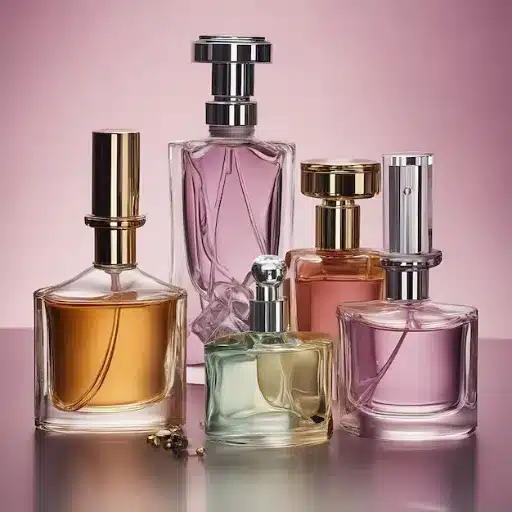
- Composition: Consider the types of materials used primarily in the bottle. Heavily relying on synthetic materials may be damaging to the environment, and the scent in the bottle might not last long.
- Volume: Determine how much you will use within a specific period. If you will use it less often, a small container will suffice. However, if you use it frequently, it is better to buy larger bottles.
- Concept and Design: Prioritize a design that aligns with your style and understanding of a tidy and straightforward approach, or you may wish to opt for more unconventional, out-of-the-ordinary designs.
- Usability: The bottles should be fitted with convenient pumps or sprayers that can dispense the enhancements into the targeted areas.
- Sustainability: The Ability to reuse containers by Refilling helps conserve the environment and materials, and is therefore encouraged.
Given that perfume bottle shapes must be considered as above, it is possible to choose one that will appeal to you both functionally and visually.
Factors to Consider in Bottle Selection
- Composition of Materials: Analyze the material of the bottle, whether it is glass, metal, or even high-grade plastic. For instance, glass bottles are often preferred because they are durable and don’t react with the perfume formulations.
- Dimensions and Of portability: Find an appropriate size of bottle for the intended usage. It is easy to transport small, therefore useful-sized bottles; however, the larger ones are more suitable for prolonged use.
- Leaking-Proof Property: Verify whether the bottle contains a seal that is airtight to minimize evaporation or contamination of the perfume, thereby making it more effective and lasting longer.
- Beneficiated Design: Consider the stylistic features of the bottle and whether it will be easy to use. A well-designed bottle will encourage its use through functional ease.
- Light Protection: Where relevant, consider purchasing perfume bottles that have been treated with protective layers against harmful UV rays or are made from tinted glass to reduce the detrimental effects of light on the contents.
Understanding the Functionality of Different Designs
Perfume bottle shapes are designed for two purposes: both decorative and utilitarian, as well as chic and suitable for different consumer markets. Current trends in product design effectively utilize innovative features to simplify and enhance the robustness of the product, while also preserving the scent within the flacon. Airless pump dispensers, for instance, are gaining popularity as they reduce the influx of air, thereby limiting the tendency for the perfume to oxidize, and the scent lasts longer in its retail container. In the case of roll-on designs, the accuracy of application is more crucial, mainly because these bottles are easy to use on the go and are suitable for applying scent to specific zones.
Additionally, the use of atomiser bottles promotes an even spray mist, ensuring that the scent is distributed optimally without wasting the product. The designs that can be removed with a lid and refilled have also become popular for their environmental friendliness, reducing the need for single-use products. Another determinant is the material used, such as glass or acrylic. Glass is preferable because it is non-reactive and does not allow ultraviolet rays to pass through, while acrylic is lightweight and strong. Perfume bottles have advanced due to high levels of engineering and the science of materials, meeting the sometimes conflicting objectives. The first of these objectives is functionality; the other is customer appreciation, which is the reason perfume bottle shapes are intended.
Balancing Aesthetics with Practicality
Combining beauty and practicality in perfume bottle design requires a multidimensional approach that encompasses both creative aspects and functional capabilities. When designing packaging, considerations such as ergonomics, material, and sealing device durability, among other factors, must be incorporated within the visually appealing contours of the pomegranate, lemon, and red-egg shapes, as well as the rest of the shapes that represent the offered scents. The ease of using alcohol atomisers or atomizers concerns the practical aspect; for example, labelling bottles, making bottle surfaces non-slip, or using bottles of appropriate weights that can be handled with ease. Whereas transformations will focus on exterior ornamentation, upgrading the look by introducing various shapes, ridges, and motifs in accordance with the company’s visual identity. Modern production technologies, such as rapid prototyping, cold die casting, and injection molding, enable the addition of details without compromising functionality, albeit to some extent. Satisfying both aesthetic and functional needs requires designs to sustain and effectively balance the two poles, where the product is not only easy to handle but also has an attractive design, ultimately leading to success.
Reference Sources
- Perfume Bottles: An Evolution Through the Ages
This article explores the historical evolution of perfume bottles, from ancient Chinese dynasties to 17th-century Europe. - History of Perfume Bottles: A Time Line
A detailed timeline of perfume bottle history, including the use of colorful glass and ancient techniques like core-forming. - The Fascinating History of Perfume Bottles: From Ancient Times to Modern Luxury
This source highlights unique designs, such as the Huntsman-shaped bottle from 1775 Germany, showcasing the artistry of perfume bottles. - Explore Perfume Bottle Shapes: Classic to Modern
A comprehensive look at the advancements and innovations in perfume bottle shapes, particularly during the mid-20th century. - Fragrance Packaging: How Brands Create an Unforgettable First Impression
This article discusses how fragrance packaging, including bottle design, aligns with consumer emotions and brand identity.

